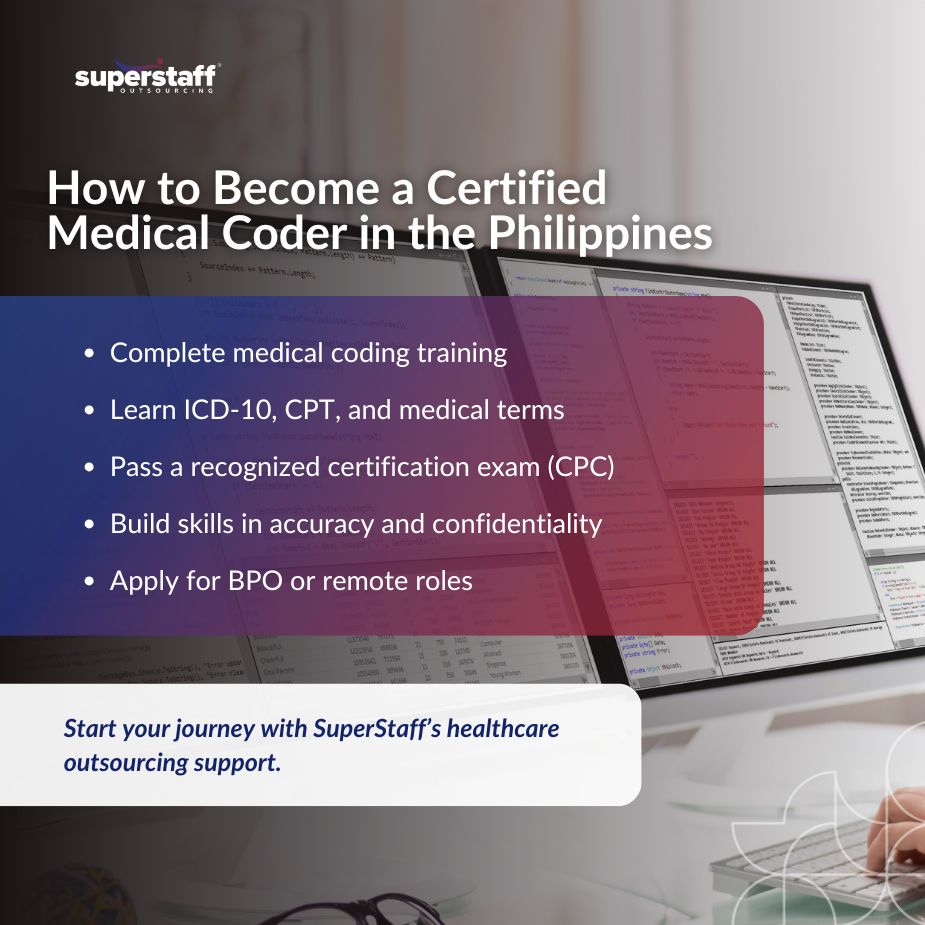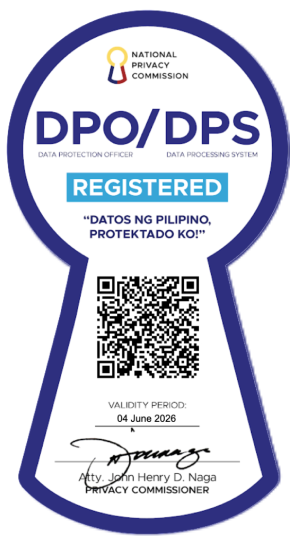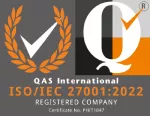
Medical coding is one of the most in-demand jobs in healthcare support. With the steady rise of remote healthcare services, many Filipinos are exploring this field as a long-term career. Becoming a certified medical coder Philippines is now a practical path for jobseekers looking for stable, well-paying roles without needing to work onsite.
Medical coders review patient records and translate medical services into standard codes. These codes help hospitals and insurance companies process billing and manage patient data. If you want to become a certified medical coder Philippines, this step-by-step guide will help you understand what it takes, what skills are needed, and how to start your career.

What Does a Medical Coder Do?
Medical coders work with patient records, doctor’s notes, and diagnostic reports. They convert this information into standard codes such as ICD-10, CPT, and HCPCS. These codes are used for billing, insurance processing, and data tracking.
- Review clinical documents and identify procedures
- Assign the right codes based on standards
- Help healthcare providers reduce errors in billing
- Make sure patient data is coded correctly for legal and insurance use
Medical coders may work in hospitals, BPO companies, or remote setups. Many work-from-home medical coding jobs are now available to certified coders.
Educational Background and Entry Requirements
To start a career as a certified medical coder Philippines, you must first meet some basic requirements. These are important whether you apply for local jobs or remote positions serving international clients.
1. High School or Senior High School Graduate
A diploma is required. STEM or ABM strands may offer a better foundation for coding concepts.
2. College Degree (Preferred but Not Mandatory)
Some employers prefer applicants with a background in nursing, medical technology, or other health sciences. However, a degree is not always required if you have completed proper training.
3. Basic Knowledge of Anatomy and Medical Terms
Understanding basic human anatomy, physiology, and medical language will help you interpret records correctly.
These are the basic requirements to be a certified medical coder in the Philippines, but the most important qualification is formal training and certification.
Training and Certification Path
Becoming a certified medical coder Philippines involves formal study, practice, and passing a recognized certification exam. Here are the steps.
1. Enroll in a Medical Coding Training Program
Choose a reputable provider. Some options include TESDA-accredited centers and private institutions offering online classes.
2. Learn Key Subjects
Training covers anatomy, physiology, medical terminology, coding systems (ICD-10, CPT, HCPCS), and basic billing procedures.
3. Prepare for the Medical Billing and Coding Certification Exam
Many aspiring coders take the medical billing and coding certification exam offered by international groups like AAPC (Certified Professional Coder or CPC) or AHIMA.
4. Take and Pass the Exam
Passing this exam shows you can code accurately and follow international standards. This opens up more job opportunities locally and abroad.
5. Consider Refresher or Specialized Courses
Some coders take additional modules in auditing, billing, or compliance to increase job flexibility.
Skills That Help You Succeed
A successful certified medical coder Philippines has both technical knowledge and strong personal habits. Here are some essential skills.
1. Accuracy and Attention to Detail
Even small errors in coding can delay billing or cause rejections. Coders must be careful when entering data.
2. Good Reading and Comprehension Skills
You need to understand clinical notes, prescriptions, and doctor’s summaries.
3. Time Management
Medical coders often work with daily or weekly deadlines. Managing time well ensures all records are completed on schedule.
4. Confidentiality and Data Privacy Awareness
Coders deal with private medical information. You must follow data protection rules strictly.
5. Familiarity with Coding Software
Some employers use specialized software. Being comfortable with digital tools is an advantage.
Where Medical Coders Work
After passing certification, coders can work in different settings. This includes hospitals, clinics, BPOs, and remote work environments.
1. Healthcare BPO Companies
Many BPOs in the Philippines serve international healthcare clients. This is the most common employer of certified coders.
2. Hospitals and Specialty Clinics
Some coders work directly in medical facilities, handling records and billing departments.
3. Insurance Companies
Coders help check claims and validate submitted codes to support faster reimbursements.
4. Remote and Freelance Projects
There is an increasing demand for work-from-home medical coding jobs. Some coders work part-time or as freelancers for U.S. and Australian clients.
5. Career Growth Opportunities
After gaining experience, coders may become team leads, trainers, coding auditors, or compliance officers.
Why Medical Coding Is a Smart Career Choice
There are many reasons why medical coding is a stable and practical career path.
- Strong demand for healthcare BPO talent
- Work-from-home flexibility
- Opportunities to serve global clients
- Minimal physical requirements
- Career development through certifications and specialties
Becoming a certified medical coder Philippines allows jobseekers to enter a growing field with competitive pay, even without years of college education.
Tips for Getting Hired
Landing your first job as a coder may take time, but these tips will help.
1. Complete Your Training With Good Scores
This shows commitment and builds your technical base.
2. Get Certified as Soon as Possible
Pass the medical billing and coding certification exam to qualify for more jobs.
3. Build a Resume Highlighting Skills
Include any medical-related background, certifications, and software knowledge.
4. Join Coding Groups or Online Forums
This helps with networking, job leads, and learning updates.
5. Consider Entry-Level BPO Positions
Start with a coding assistant or junior role to gain hands-on experience.
Start a Healthcare Coding Career in the Philippines
Becoming a certified medical coder Philippines is one of the most practical ways to build a healthcare-related career with global reach. The path is clear: get trained, pass the certification, and apply your skills in a stable, growing industry.
SuperStaff connects certified medical coders with job opportunities that match their skills and goals. Whether you are looking for office-based roles or work-from-home medical coding jobs, our team can help you find the right match. With the right support and training, you can grow your career while helping the healthcare industry deliver accurate and timely service.






